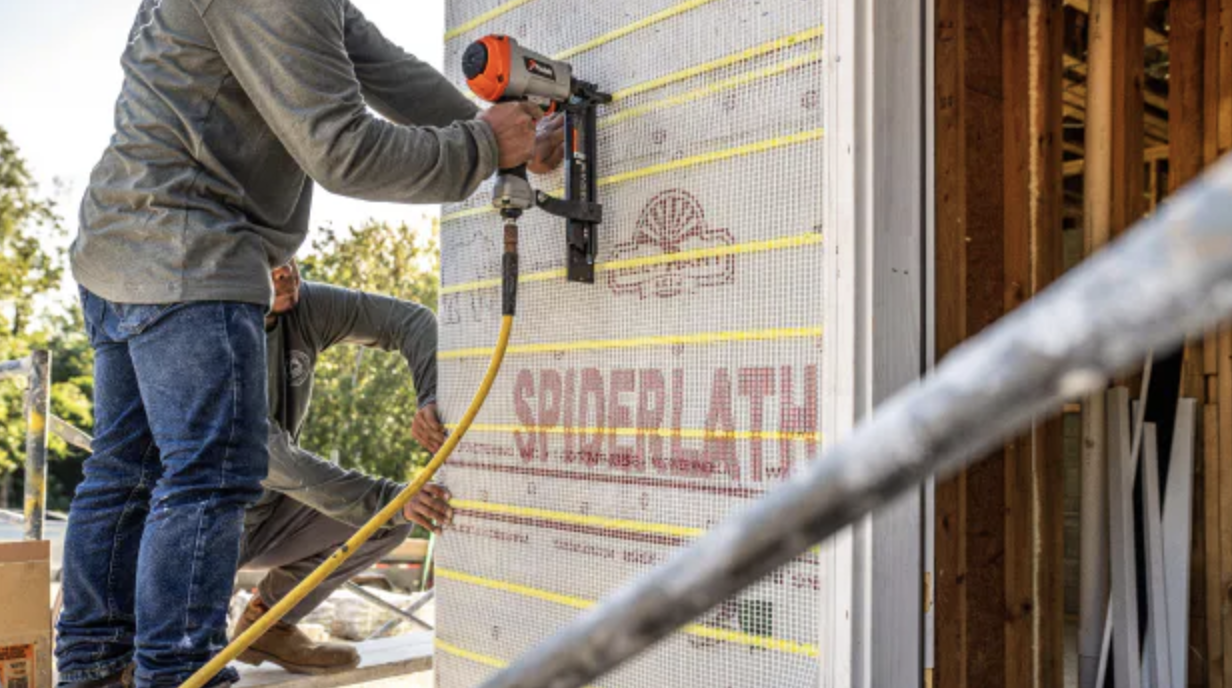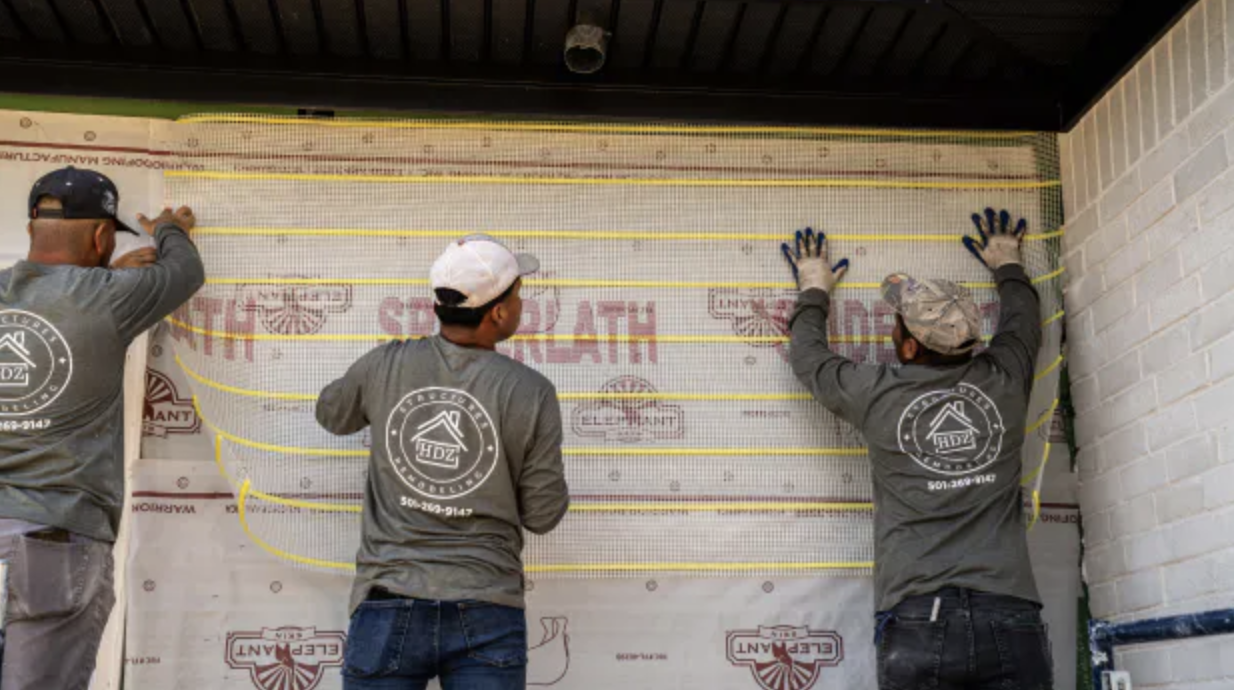Posted by Spycor Building on Apr 9th 2025

If you're installing stucco or stone veneer and wondering how to avoid rust, cuts, and heavy materials, you’re not alone. Many builders and contractors have faced the same issue: how to install stucco or stone veneer without the hassle of metal lath. That’s where SpiderLath comes in.
In this installation guide, we’ll walk you through everything you need to know — from what fiberglass lath is used for in construction to how to install it over plywood. Whether you’re working on a residential build or a commercial stucco system, this guide is your complete resource for SpiderLath installation.
The Problem with Traditional Metal Lath
Traditional metal lath has been the industry standard for decades, but it’s not without its challenges. Contractors and builders have long dealt with issues like corrosion, sharp edges, and cumbersome handling. Metal lath is heavy, difficult to cut, and often leaves installers with nicks and cuts after a long day on-site. Worse, when exposed to moisture, metal lath can rust—compromising the integrity of the stucco or stone veneer system and leading to costly repairs down the road.
-
Heavy and hard to handle
-
Sharp edges that cause injury
-
Prone to rust and corrosion
-
Time-consuming installation
These problems increase labor time and costs. That’s why more professionals are making the switch to fiberglass lath like SpiderLath.
What Is Fiberglass Lath Used for in Construction?
Fiberglass lath, specifically SpiderLath, is a high-strength fiberglass mesh used as a base for stucco, plaster, and stone veneer applications. It’s engineered to replace traditional metal lath in both interior and exterior construction, offering a lightweight, rust-free, and easy-to-install alternative.
In construction, fiberglass lath serves as a reinforcement layer that helps materials like stucco and mortar adhere securely to surfaces such as plywood, OSB, concrete, and framing. It plays a vital role in ensuring long-term stability, minimizing cracking, and meeting building code requirements.
Some common uses include:
-
Stucco installation on plywood or OSB
-
Stone veneer over concrete or framing
-
EIFS (Exterior Insulation and Finish Systems)
-
Commercial and residential wall reinforcement
SpiderLath vs. Metal Lath for Exterior Walls
Let’s compare the two:

SpiderLath is easier to transport, safer to use, and doesn’t rust — making it ideal for any builder looking to streamline their workflow.
Benefits of Fiberglass Lath for Home Building
SpiderLath provides many benefits that make it a smart choice:
-
Non-corrosive: It doesn’t rust, even in coastal or humid environments.
-
Time-saving: One-step installation means you save time and labor costs.
-
Lightweight and flexible: Makes it easier to work around corners and uneven surfaces.
-
Strong and durable: Meets or exceeds code requirements for stucco and veneer applications.
Whether you’re a contractor, homebuilder, or DIY enthusiast, using fiberglass lath for stucco or fiberglass lath for stone veneer makes the job significantly easier, faster, and more efficient. Unlike metal lath, fiberglass mesh like SpiderLath is lightweight, rust-proof, and safe to handle — reducing installation time and minimizing the risk of injury. It also conforms better to uneven surfaces, helping you achieve a smoother, more professional finish with less effort.
How to Install SpiderLath Over Plywood: Step-by-Step
Tools You’ll Need:
-
Staple gun or screws
-
Scissors or utility knife
-
Measuring tape
-
Joint compound or mortar (as required by your project)
Installation Instructions:
-
Prepare the Surface
Make sure your plywood or wall sheathing is clean, dry, and free from dust or grease. -
Roll Out SpiderLath
Cut the SpiderLath to fit your work area. Use scissors or a utility knife for clean cuts. -
Fasten the Lath
Staple or screw the lath into the surface, spacing fasteners every 6 inches around the edges and every 12 inches in the field. Make sure it's tight and flat against the surface. -
Overlap the Seams
Overlap adjoining sheets by about 1 inch. This ensures consistent coverage and better bonding. -
Apply Mortar or Stucco
Once the lath is secured, apply your stucco base coat or mortar. The fiberglass mesh helps bond the material to the wall, reducing cracks and enhancing durability. -
Cure and Finish
Let your material cure as per the manufacturer's guidelines before applying any finish coats.

Ready to Build Smarter?
Tired of working with rusty metal, sharp edges, and labor-heavy installations? SpiderLath is the better, smarter choice for modern construction. Unlike traditional metal lath, SpiderLath won't rust, is safer to handle, and cuts your install time significantly.
Make your next stucco or stone veneer project faster, safer, and more efficient with SpiderLath — the proven alternative that saves time, reduces injuries, and ensures long-term durability.
CLICK HERE to order your SpiderLath now for your next stucco or stone veneer project.



